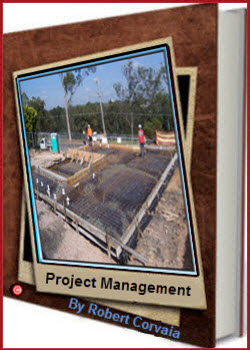|
|
Civplex Structural Engineers
Has Quality Engineers
And Engineering
|
"Important NOTE" Information Provided On This
Website Is Intended For "GENERAL INFORMATION Things You Need To Know About On-Site Stormwater Detention Tanks.On-site storm water detention tanks are used as a method for temporarily storing storm water and then releasing
it slowly so that it does not worsen any flood situation downstream. Underground detention of storm water allows for a large volume of water to be stored in a relatively
small In multi storied buildings they are frequently located under the parking garage. However, compared to open surface detention, an underground vault may be the better option; since the In addition unwanted birds and animals may be attracted to these surface water detention ponds. Open WHAT'S IN THE DESIGN OF AN ON-SITE STORMWATER DETENTION TANKAn on-site detention facility usually consists of three parts. The discharge control pit or DCP is used
to The second part of this system consists of the storage tank. The discharge restriction of the
discharge The third part is the site drainage system. All the excess storm water is channeled, via the site drainage system, to the discharge control pit. The discharge control pit consists of a detention vault. The size of the detention vault depends on
the * The Average Rainfall During The Rainy Season The more prone an area is to floods and storms, the larger the detention vault has to be. The criteria in the local building regulations have also to be satisfied. The detention vault can store a considerable volume of water in relatively small area. The detention vault can also be made by using pre-cast concrete tanks or even constructed by pouring concrete in-situ. It should be sufficiently strong to withstand the static pressure of water. The shape of the tank is determined by the area in which it is constructed. If it is constructed under
a Since drainage is mostly achieved by gravity, the height of each component of the system is crucial. WHY SHOULD YOU HAVE ON-SITE STORMWATER DETENTION TANKS?In some areas it is mandated by law. Local building and development rules ensure that all properties
have The owner is duty bound not only to construct it, but also has to maintain it in good shape. At times, the layout of property may be such that the storage of water poses a danger to the property and those around it. In this case, the council may grant an exemption. However, Sufficient Data Should Back Up The Claim For Exemption: Since an on-site detention tank system is mandatory in some areas, owners have assimilated it to blend Since having an on-site detention tank system adds to the cost of property, many property owners feel that they are paying for the mistakes of the government in not taking appropriate flood control measures. However, the on-site detention tanks are used to prevent current flooding problems from growing, and
not On-site storm water detention tanks have a practical use. They should not be viewed in isolation from
the In fact by having these detention tanks, flooding is prevented and as a result, the property retains its
value
"Important NOTE" Information Provided On This Website Is
Intended For "GENERAL INFORMATION
ONLY" And Must Be Only Be Used Only As A "GUIDE" It Must Not Be Used For Decision Making, Or Be Used For Any Building Purposes Or Legal Proceedings. Refer To Our Policies On This Website. |
|
|
|
|
|
|
|
|
|
|
|
|
|
|
|
|
|
|
Civplex Structural Engineers Pty
Ltd |
|
|
|
|
|
|
|
|
|
|
|
|
|
|
|
|
|
|
|
|
|
|
|
|
|
|
|
|
|
|
|
|
|
|
|
     |
|
©®™
Copyright 2011 - 2021 www. Structural Engineers Civplex.com.au All Rights
Reserved Worldwide The Use of This Website Constitutes |
|
|












 Facebook
Facebook Netvouz
Netvouz Stumbleupon
Stumbleupon Technorati
Technorati BlinkList
BlinkList Digg
Digg Livejournal
Livejournal Reddit
Reddit Wists
Wists Diigo
Diigo Ma.gnolia
Ma.gnolia Twitter
Twitter Yahoo My Web
Yahoo My Web Spurl
Spurl Newsvine
Newsvine Google Bookmarks
Google Bookmarks Fark
Fark Delicious
Delicious Blogmarks
Blogmarks

























